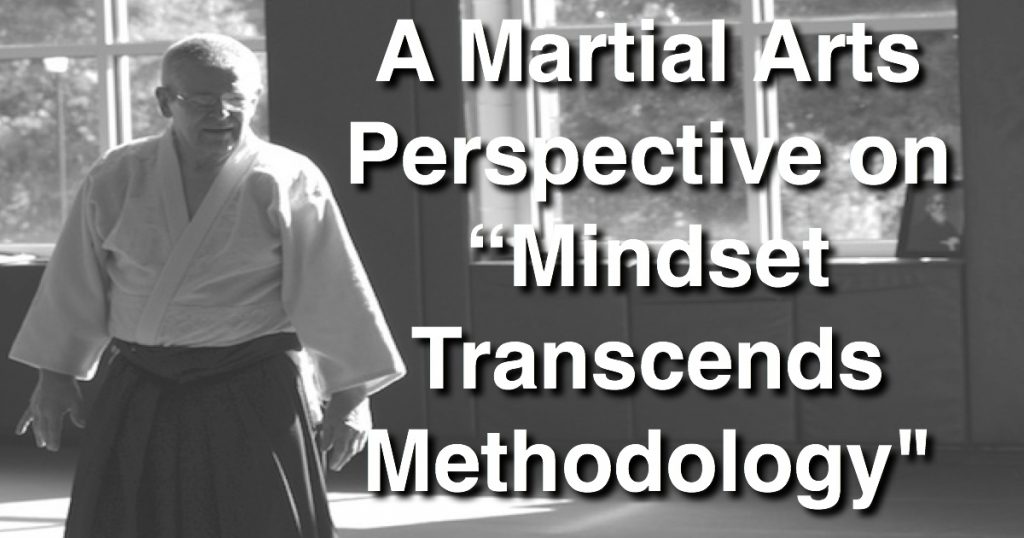I like to say that Timeless Agility is the outcome of a mindset that transcends methodology. In other words, the how will come and go but the why – what your organization is trying to achieve – remains much more constant. The martial arts provide us with a great parallel to this idea. Why do martial arts exist, what is their why? The common historical purpose of the martial arts is predominantly around combat and/or self-defense. Given that goal, why are there tens of thousands of martial arts styles worldwide?
Fill the Gaps
I will never forget the time I paired up with Sensei Sakamoto of the Northern Virginia Aikikai. No matter how hard I tried to “get him”, I always ended up on the ground. I would get back up and try again. After several minutes, out of breath, and sweating profusely, I realized that this much older man was not even breathing heavy. It seemed like he was doing very little to deflect my attacks, and it was true. There was no need for him to punch or kick me for I was wearing myself out in futility. That experience was humbling and demonstrated what I needed to aspire to. Similarly, when observing a team seemingly executing its agile framework effortlessly, it is only natural to want to mimic that success. Pure Aikido lacks any punching or kicking tactics. The goal is to deflect attackers, not be an attacker. However, when I was taught where strikes could be made, I was learning a variation to the practice or the movement. As awesome as Aikido is, as much as I was in allegiance to it, adding elements of other styles helped to fill the gaps. This happens in our teams as well. For example, concepts from Kanban are often mixed in with the practice of Scrum – to fill some gaps.
With a continuous improvement mindset, there will always be a need to “fill the gaps.” In other words, hold on to your prescribed methods loosely.
It is this idea of filling the gaps that breeds new martial arts styles. Aikido itself was created as a combination of theory and technique derived from other arts – to fill the gaps. Many practices are borrowed, some revised, and others created new. While teams may blend other practices with Scrum, Scrum itself is also a blend of what came before it. With thousands of years of history behind us, we learn that this combat and self-defense mindset of martial arts remained constant while the methods to achieve it changed. In other words, the mindset transcended the methodology.
Agile methodologies and frameworks have much less history to demonstrate the same pattern, but thus far we have seen new frameworks evolve from older ideas and existing frameworks are evolving to stay relevant, all with the intent of providing new or better ways to live out Agile. The goal is the same while the methods change.
